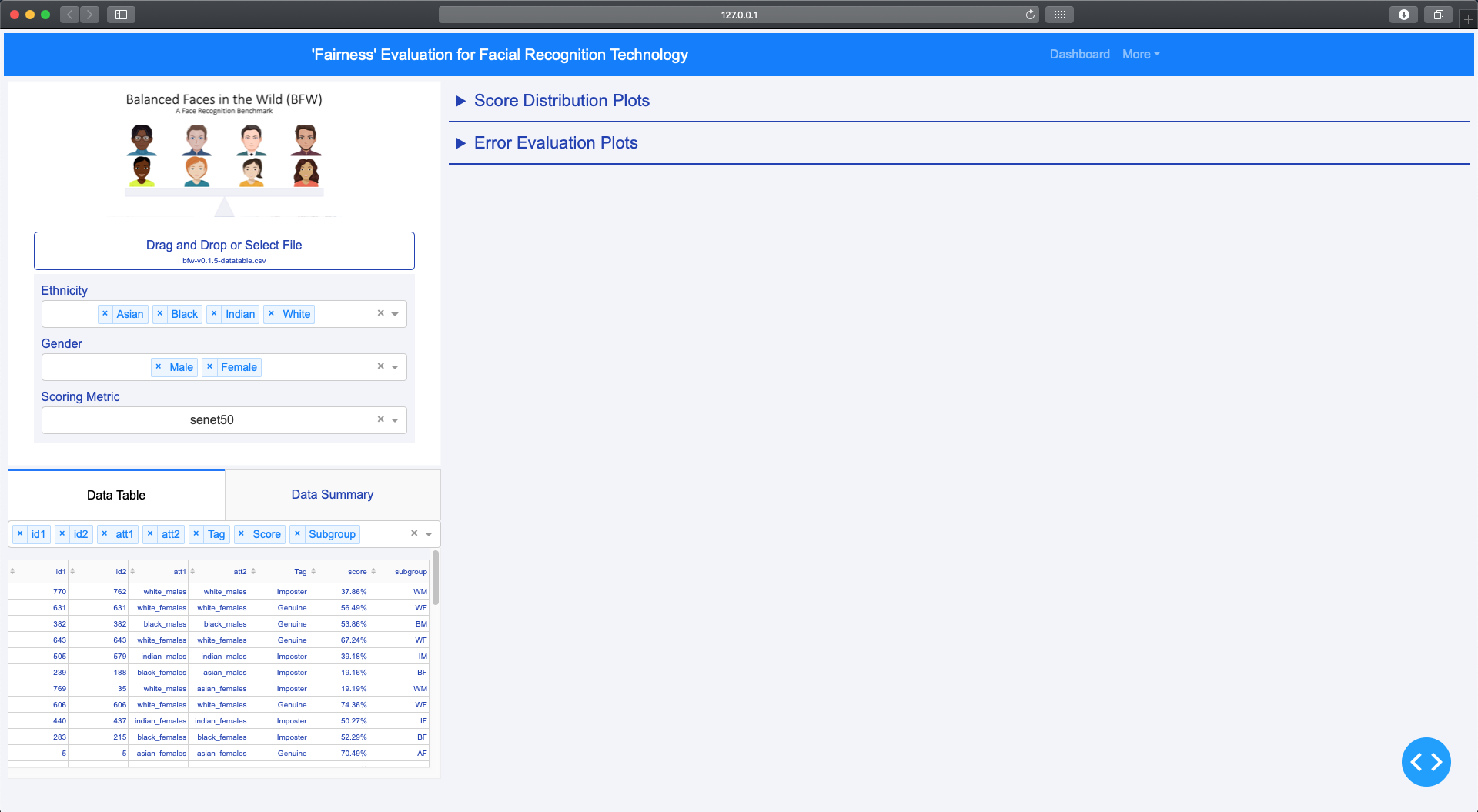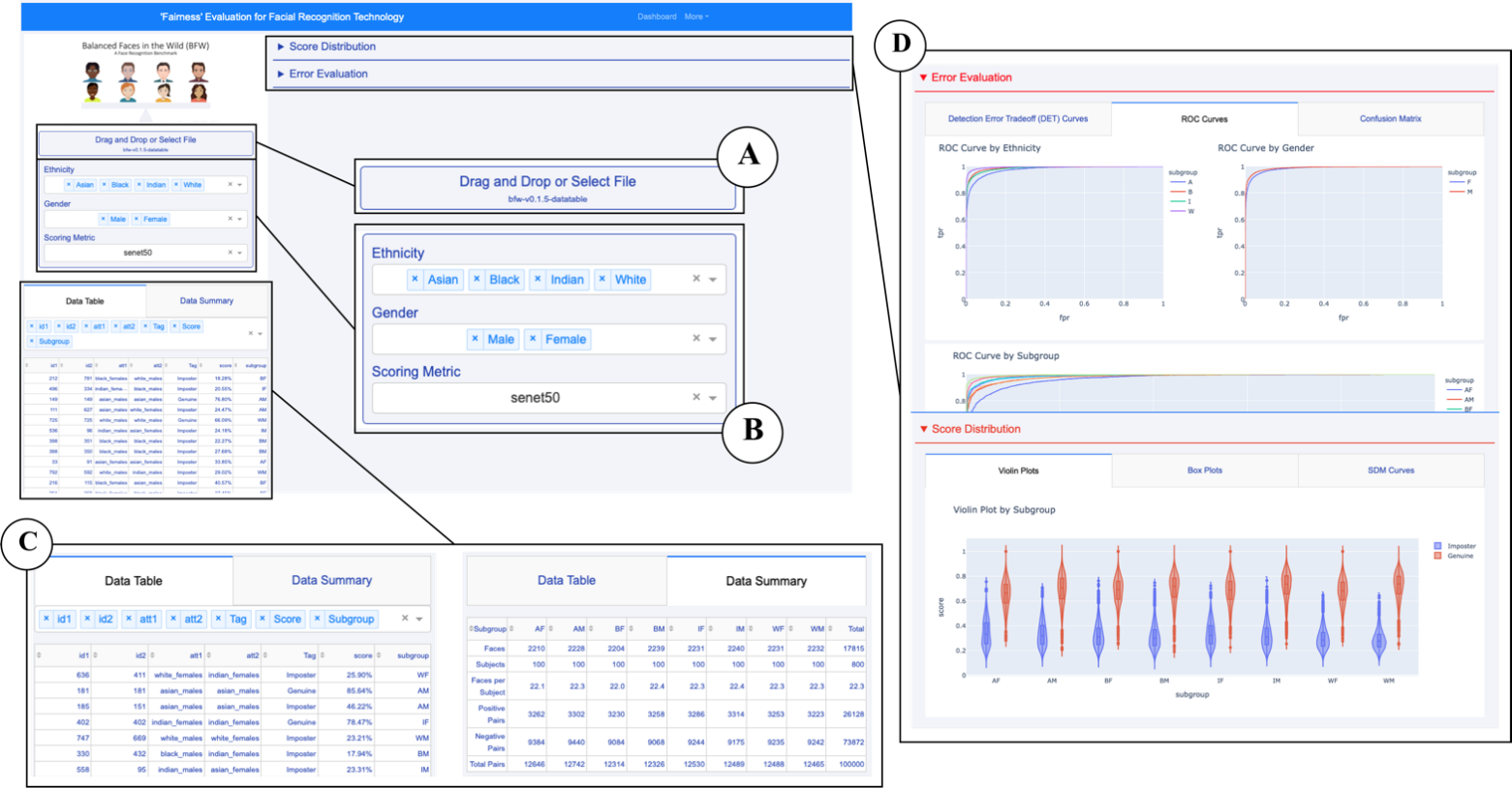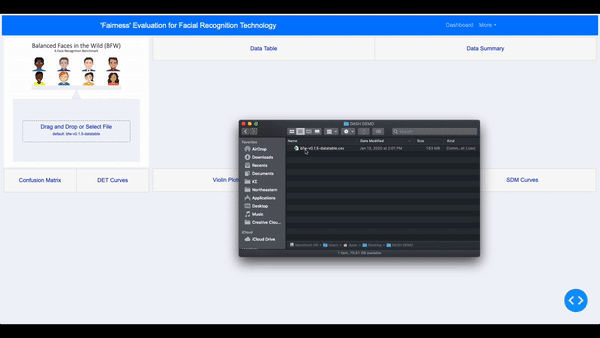The Balanced Faces in the Wild Dashboard is a tool for users to find bias in their facial recognition models.
- Code/Installation
- Research, Innovation, and Scholarship Expo
- Key Terms
- Visualizations
- User Interface
- Skeleton
For installation and .py files visit this Github repo:
https://github.com/ddasgupta4/bfw-dash
For a closer look at the code and motivations visit this Github repo: https://github.com/visionjo/facerec-bias-bfw
- The research paper: https://github.com/aliceloukianova/bias-dash/blob/master/A%20Fairness%20Tool%20for%20Bias%20in%20FR.pdf
- The poster: https://github.com/aliceloukianova/bias-dash/blob/master/EECE2300-BIAS-RISE-2020-POSTER.pdf
- The presentation: https://prezi.com/js6eygtyapjl/rise-2020-bias-in-fr-technology
- The recording of the presentation: https://github.com/aliceloukianova/bias-dash/blob/master/Video%20Presentation.md
True Positive/Sensitivity: Measures the proportion of actual positives that are correctly identified as such.
True Negative/Specificity: Measures the proportion of actual negatives that are correctly identified as such.
False Positive: When the prediction is positive and it’s false, this is a Type 1 Error.
False Negative: When the prediction is negative and it’s false, this is a Type 2 Error.
SDM Curve: A violin plot showing a distribution of scores, using imposter and genuine scores against each other displaying the overlap between the two.
DET Curve: Detection error trade off curve plots the false negative rate (FNR) as a function of the false positive rate (FPR). A tool to see the tradeoff between the sensitivity and specificity of the FR model.
ROC Curve: Receiever operating characteristic curve plots the true positive rate (TPR) against the false positive rate (FPR).
Confusion Matrix: Measures recall, precision, specificity, and accuracy in a model.
Recall: Measures how much was correctly predicted out of all the positive cases.
Precision: Looks at how many cases are truly positive out of the positive ones predicted correctly.
Specificity: Measures correctness of the true negative rate.
Accuracy: Measures much was predicted correctly out of all the classes.
All vizualizations featured in the Dashboard can be found here: https://github.com/aliceloukianova/bias-dash/tree/master/Visualizations
This includes a Signal Detection Model , Detection Error Tradeoff (DET) Curves, Receiver Operating Characteristic (ROC) Curves, and a Confusion Matrix.
├── LICENSE
├── Makefile <- Makefile with commands like `make data` or `make train`
├── README.md <- The top-level README for developers using this project.
├── data
│ ├── external <- Data from third party sources.
│ ├── interim <- Intermediate data that has been transformed.
│ ├── processed <- The final, canonical data sets for modeling.
│ └── raw <- The original, immutable data dump.
│
├── docs <- A default Sphinx project; see sphinx-doc.org for details
│
├── models <- Trained and serialized models, model predictions, or model summaries
│
├── notebooks <- Jupyter notebooks. Naming convention is a number (for ordering),
│ the creator's initials, and a short `-` delimited description, e.g.
│ `1.0-jqp-initial-data-exploration`.
│
├── references <- Data dictionaries, manuals, and all other explanatory materials.
│
├── reports <- Generated analysis as HTML, PDF, LaTeX, etc.
│ └── figures <- Generated graphics and figures to be used in reporting
│
├── requirements.txt <- The requirements file for reproducing the analysis environment, e.g.
│ generated with `pip freeze > requirements.txt`
│
├── setup.py <- makes project pip installable (pip install -e .) so src can be imported
├── src <- Source code for use in this project.
│ ├── __init__.py <- Makes src a Python module
│ │
│ ├── data <- Scripts to download or generate data
│ │ └── make_dataset.py
│ │
│ ├── features <- Scripts to turn raw data into features for modeling
│ │ └── build_features.py
│ │
│ ├── models <- Scripts to train models and then use trained models to make
│ │ │ predictions
│ │ ├── predict_model.py
│ │ └── train_model.py
│ │
│ ├── visualization <- Scripts to create exploratory and results oriented visualizations
│ | └── visualize.py
│ │
│ └── evaluation <- Scripts to evaluate data metrics
│ └── metrics.py
│
└── tox.ini <- tox file with settings for running tox; see tox.testrun.org
Project based on the cookiecutter data science project template. #cookiecutterdatascience


